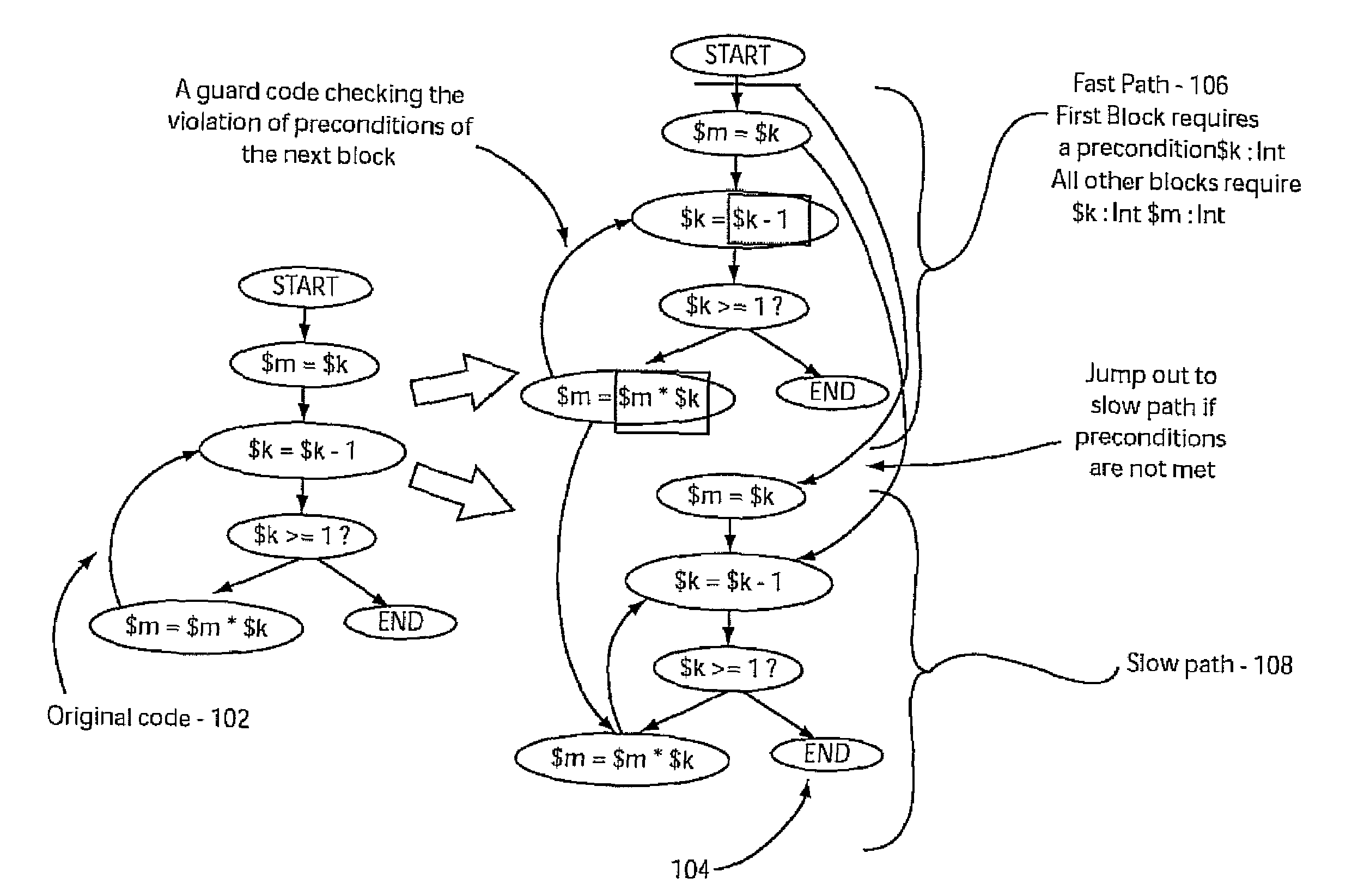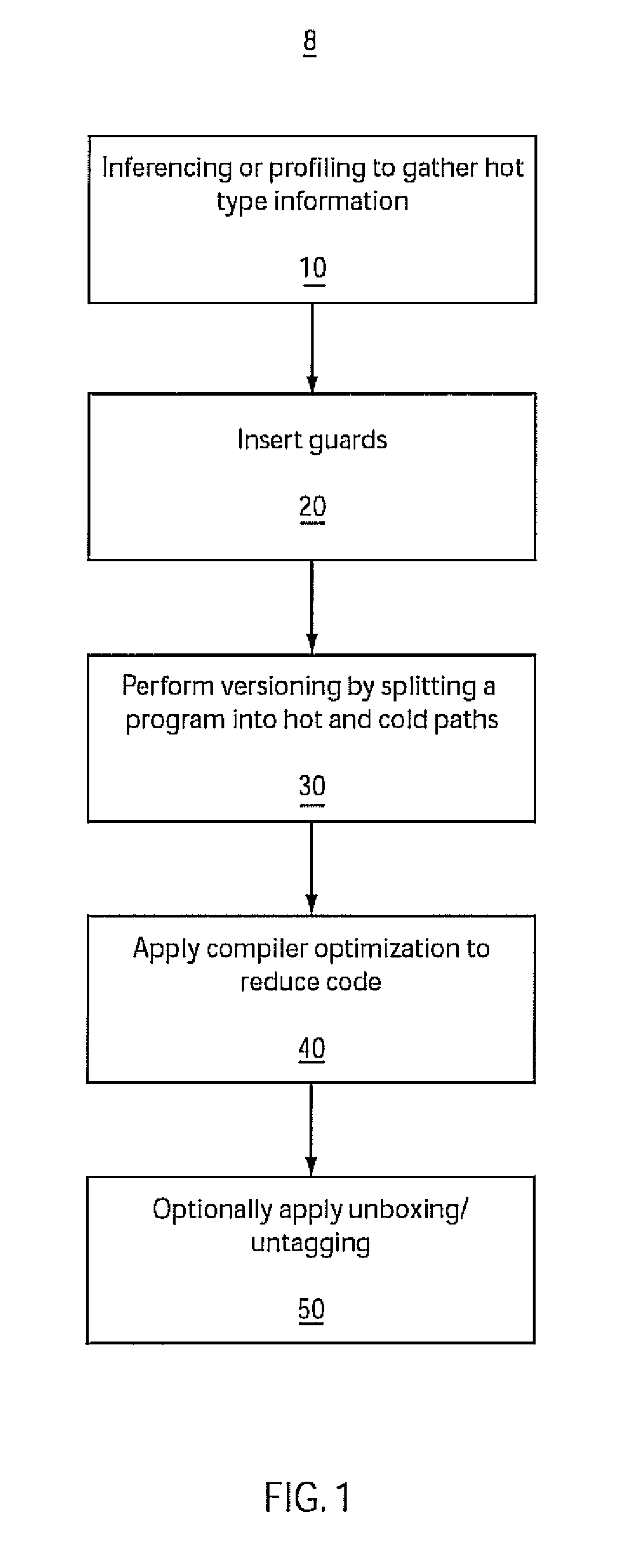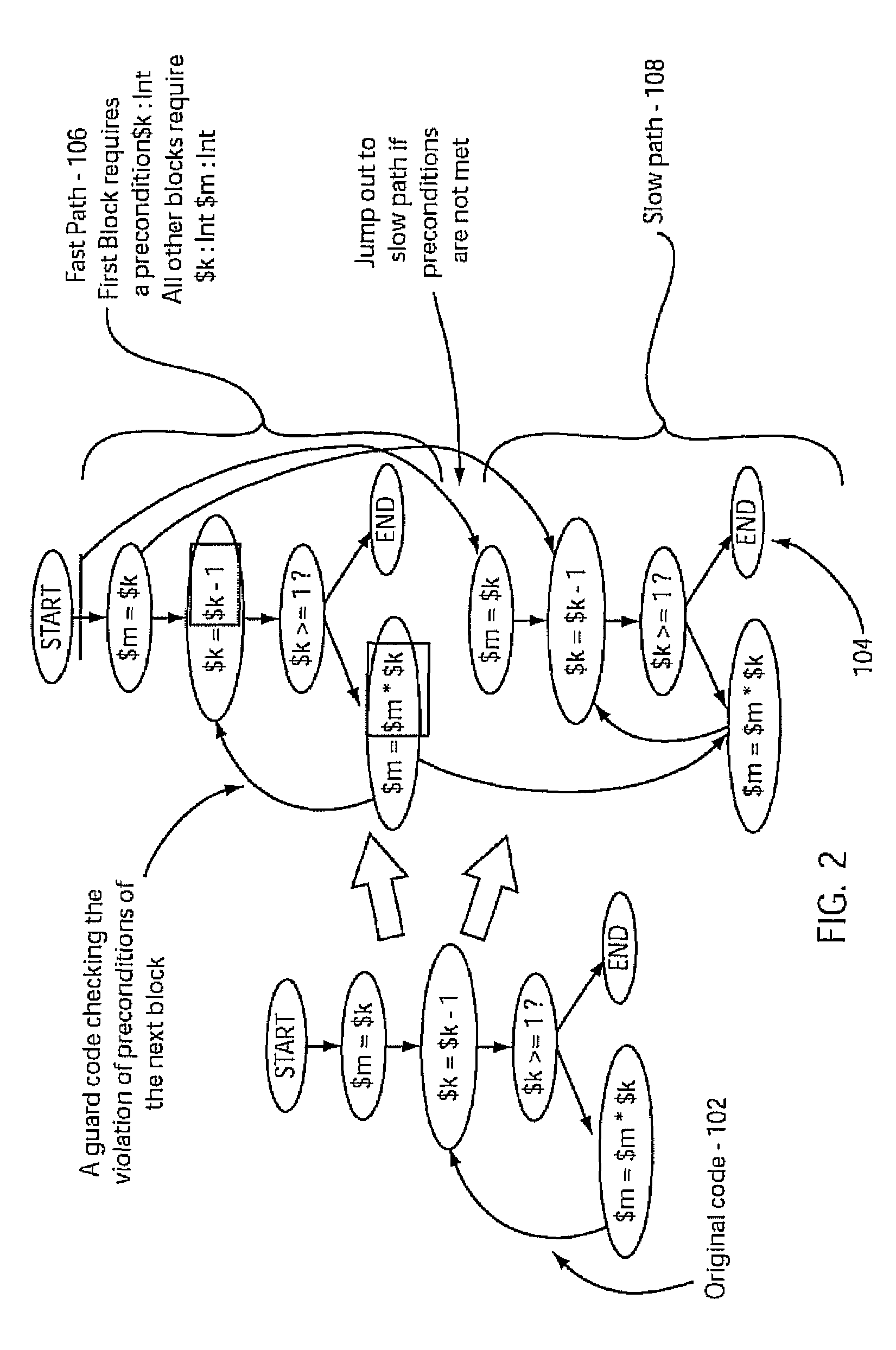Versioning optimization for dynamically-typed languages
a dynamically typed language and optimization technology, applied in the field of optimization of code, can solve the problems of many proposals of untagging, unboxing, or escape analysis that have limitations when applied to dynamically typed languages, and cannot remove more significant costs, so as to achieve more gains, remove the cost of redundant representation of values, and heavy overload of operators
- Summary
- Abstract
- Description
- Claims
- Application Information
AI Technical Summary
Benefits of technology
Problems solved by technology
Method used
Image
Examples
Embodiment Construction
[0019]The present principles provide systems and methods which target dynamically-typed languages, including LISP, Smalltalk, Ruby, PHP, etc. Such languages tend to perform worse than statically typed languages for largely two reasons: 1) Values are represented by heavier data structures, containing runtime type information; and 2) Primitive operators are heavily-overloaded, and are only resolved at runtime. Therefore, optimizing compiler technology is beneficial for removing these overheads by 1) optimizing the representation of values, and 2) increasing the chance of specialization, e.g., devirtualization, and inlining. All known proposals for optimizing dynamic languages suffer from some restrictions, which prevent them from obtaining performance comparable to statically-typed languages.
[0020]Embodiments of the present invention can take the form of an entirely hardware embodiment, an entirely software embodiment or an embodiment including both hardware and software elements. In ...
PUM
 Login to View More
Login to View More Abstract
Description
Claims
Application Information
 Login to View More
Login to View More - R&D
- Intellectual Property
- Life Sciences
- Materials
- Tech Scout
- Unparalleled Data Quality
- Higher Quality Content
- 60% Fewer Hallucinations
Browse by: Latest US Patents, China's latest patents, Technical Efficacy Thesaurus, Application Domain, Technology Topic, Popular Technical Reports.
© 2025 PatSnap. All rights reserved.Legal|Privacy policy|Modern Slavery Act Transparency Statement|Sitemap|About US| Contact US: help@patsnap.com



